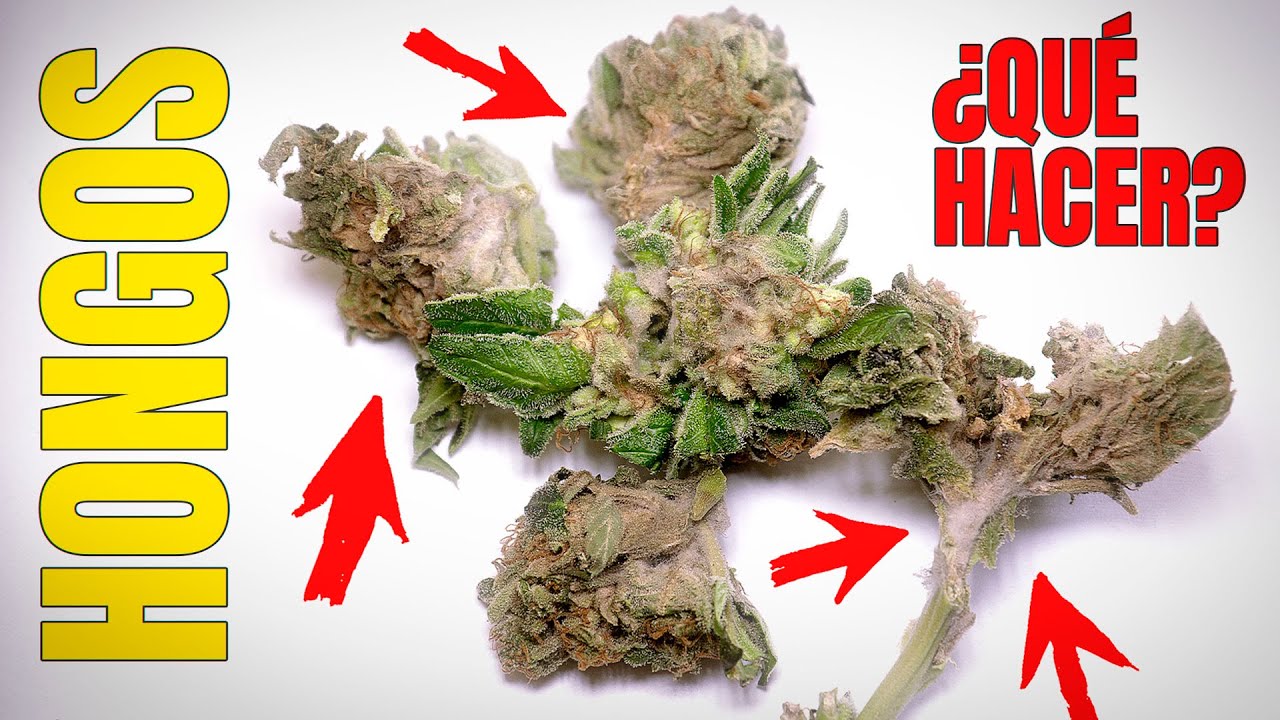What is Mold and Botrytis in Cannabis?
Mold and Botrytis are two of the most common problems affecting cannabis crops, especially in conditions of high humidity and unsuitable temperatures. Both are fungi that can proliferate on plants and compromise the quality of the final product, as well as the health of the plant.
Mold in Cannabis
Mold, specifically gray mold, usually presents as a slimy or cottony layer on the surface of leaves and flowers. This fungus develops in humid environments and there can be different varieties that also affect cannabis, such as:
- Black mold
- White mold (powdery mildew)
Mold treatment involves the use of fungicides, although it is also crucial to improve ventilation and reduce humidity to prevent mold growth.
Botrytis in Cannabis
Botrytis cinerea, commonly known as the “gray mold,” is another fungus that can wreak havoc on cannabis plants. This fungus is characterized by breaking down flowers and leaves, which can result in significant losses. The conditions that favor the growth of botrytis are:
- High humidity
- Moderate to cool temperatures
- Lack of air circulation
Growers should keep an eye out for signs of Botrytis, such as brown spots on the flowers, and act quickly to apply antifungal treatments and improve growing conditions.
How to Identify Mold and Botrytis in Your Cannabis Crops
Early identification of mold and Botrytis is crucial to maintaining the health of your cannabis crops. Both conditions are caused by fungi and can severely damage your harvest if not addressed in time. Below, we’ll explore visual signs and the conditions that encourage their development.
Common Visual Signs
- Mold: It appears as a grayish or white layer on the surface of leaves and shoots, similar to a powder.
- Botrytis (gray mold): Dark or brown spots on flowers, especially in high humidity conditions.
- Decomposition: It starts in the flowers and can spread to other parts of the plant.
Conditions That Foster Growth
Mold and Botrytis thrive in moist, poorly ventilated environments. The following conditions increase the risk:
- High humidity (above 60%).
- Poor air circulation between plants.
- Low temperatures at night.
If you notice any of these signs or conditions in your crop, it’s essential to act quickly to prevent the spread of these fungi and protect your harvest. Prevention and constant surveillance are the keys to healthy cultivation.
Impact of Mold and Botrytis on the Quality of Medical Cannabis
Mold and Botrytis cinerea are two of the most common pathogens affecting the cultivation of medical cannabis, and their presence can have severe repercussions on the quality of the final product. These fungi not only compromise the aesthetic appearance of the buds, but also affect their medicinal properties and safety of consumption.
How Mold and Botrytis Affect
- Potential Reduction: Mold can degrade cannabinoid compounds and terpenes, essential for the therapeutic properties of cannabis.
- Contamination: The presence of Botrytis can lead to the production of mycotoxins, which are harmful to human health.
- Rapid Proliferation: Both can spread quickly in high humidity conditions, compromising entire crops if not properly controlled.
Early detection and proper management of these pathogens are essential to ensure the quality and safety of medical cannabis. If left unaddressed, the impact of mold and Botrytis can not only mean significant economic losses for growers, but also put the health of patients who rely on cannabis as a treatment at risk.
Is It Safe to Use Cannabis Affected by Mold and Botrytis?
Consuming cannabis affected by mold and Botrytis can pose significant health risks. These conditions thrive in humid and poorly ventilated environments, and can indicate the presence of harmful pathogens. Mold, in particular, produces mycotoxins that can be harmful when inhaled or consumed.
Risks Associated with Mold and Botrytis
- Allergic Reactions: People with respiratory allergies may experience severe symptoms.
- Lung Infections: Inhaling mold spores can lead to infections in the lungs, especially in individuals with compromised immune systems.
- Health Complications: Contaminated cannabis use can worsen pre-existing conditions, such as asthma.
In addition, Botrytis cinerea, known as “gray mold,” can break down cannabis flowers, reducing their therapeutic value. Although some experts suggest that cannabis experts could remove damaged parts, this does not eliminate the risk of contamination or adverse effects from consuming products that have been compromised.
Prevention and Treatment of Mold and Botrytis in Cannabis
Mold and Botrytis cinerea, also known as “gray rot,” are two of the most common problems faced by cannabis growers. These pathogens can ruin entire crops if not managed properly. Prevention is key to keeping plants healthy and productive.
Prevention of Mold and Botrytis
- Moisture Maintenance: Maintaining an adequate humidity level, usually between 40% and 60%, prevents an environment conducive to these fungi.
- Good air circulation: Make sure air circulates freely around the plants. Installing fans can help in this regard.
- Proper spacing: Plant the seeds or clones with enough space between them to avoid congestion and moisture buildup.
- Use of resistant varietals: Consider growing strains that are known for their resistance to various diseases, including Botrytis.
Treatment of Mold and Botrytis
If despite your preventive efforts, mold or Botrytis does manifest itself, it is crucial to act quickly to minimize damage:
- Manual removal: Remove infected parts of the plant immediately to prevent the spread of the fungus.
- Application of fungicides: Consider using approved organic or systemic fungicides for cannabis cultivation. Always check that they are safe and allowed in your region.
- Improve environmental conditions: Adjust the humidity and temperature to slow the growth of the fungus. Using dehumidifiers can be a wise decision in this case.


